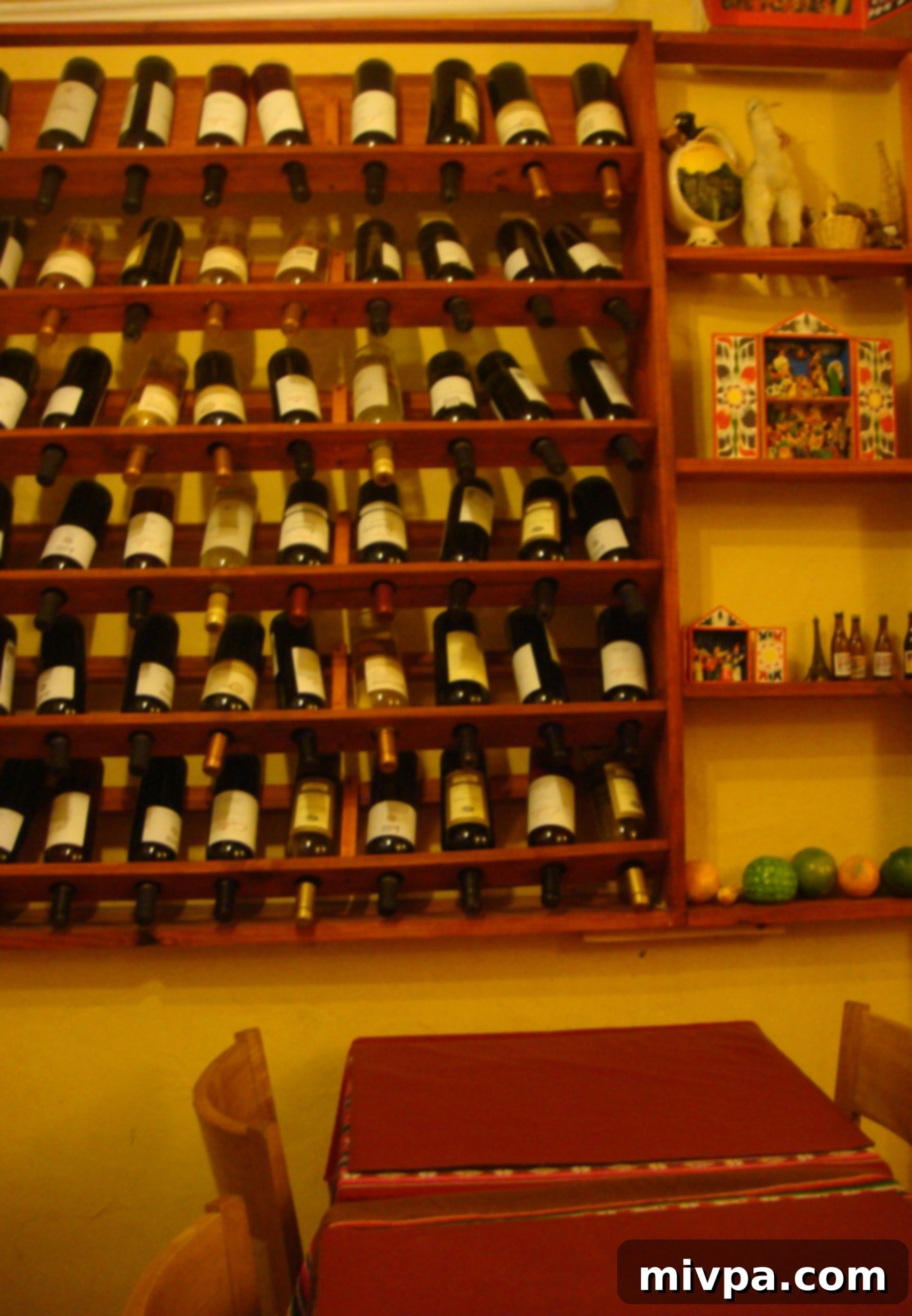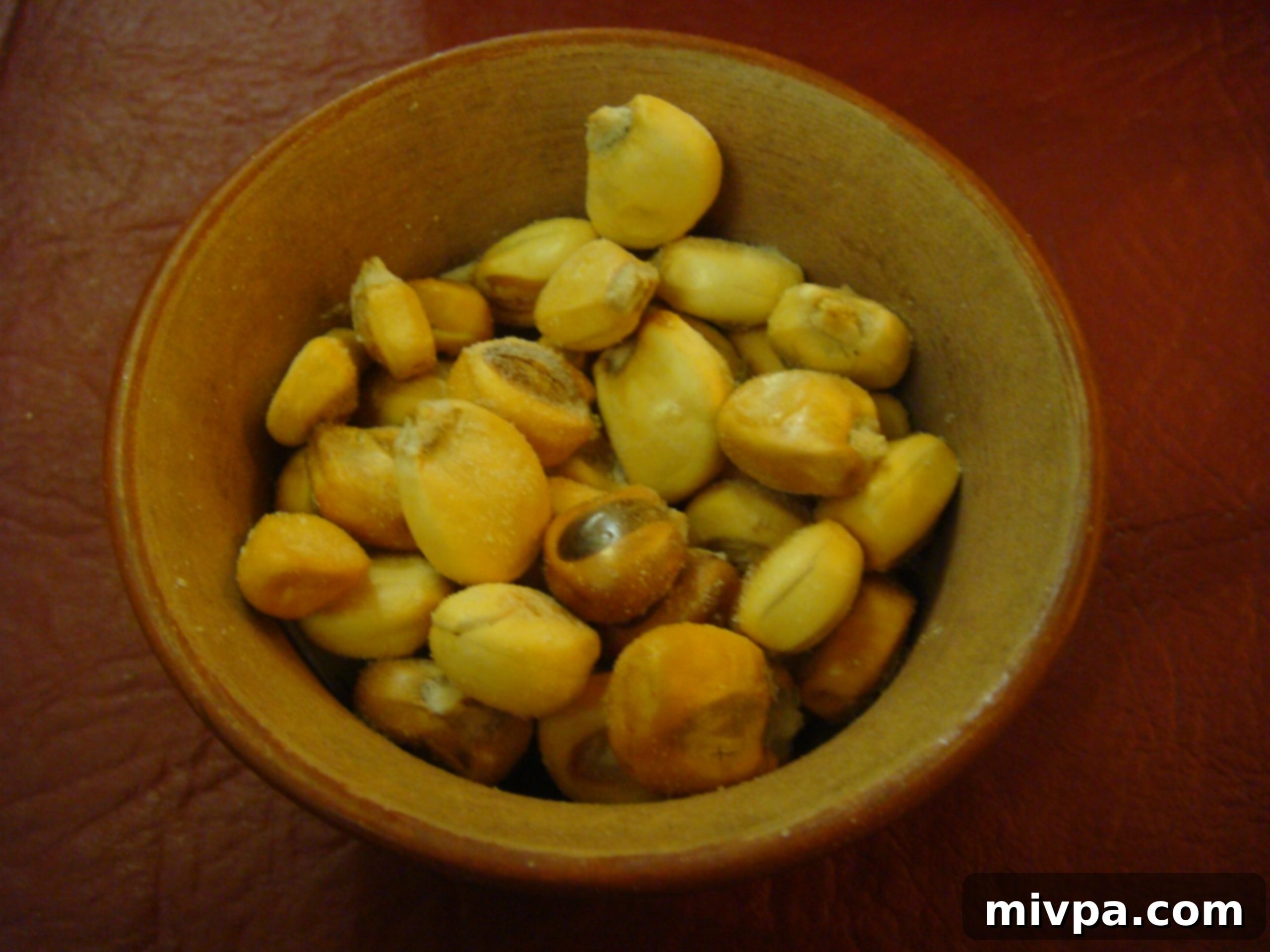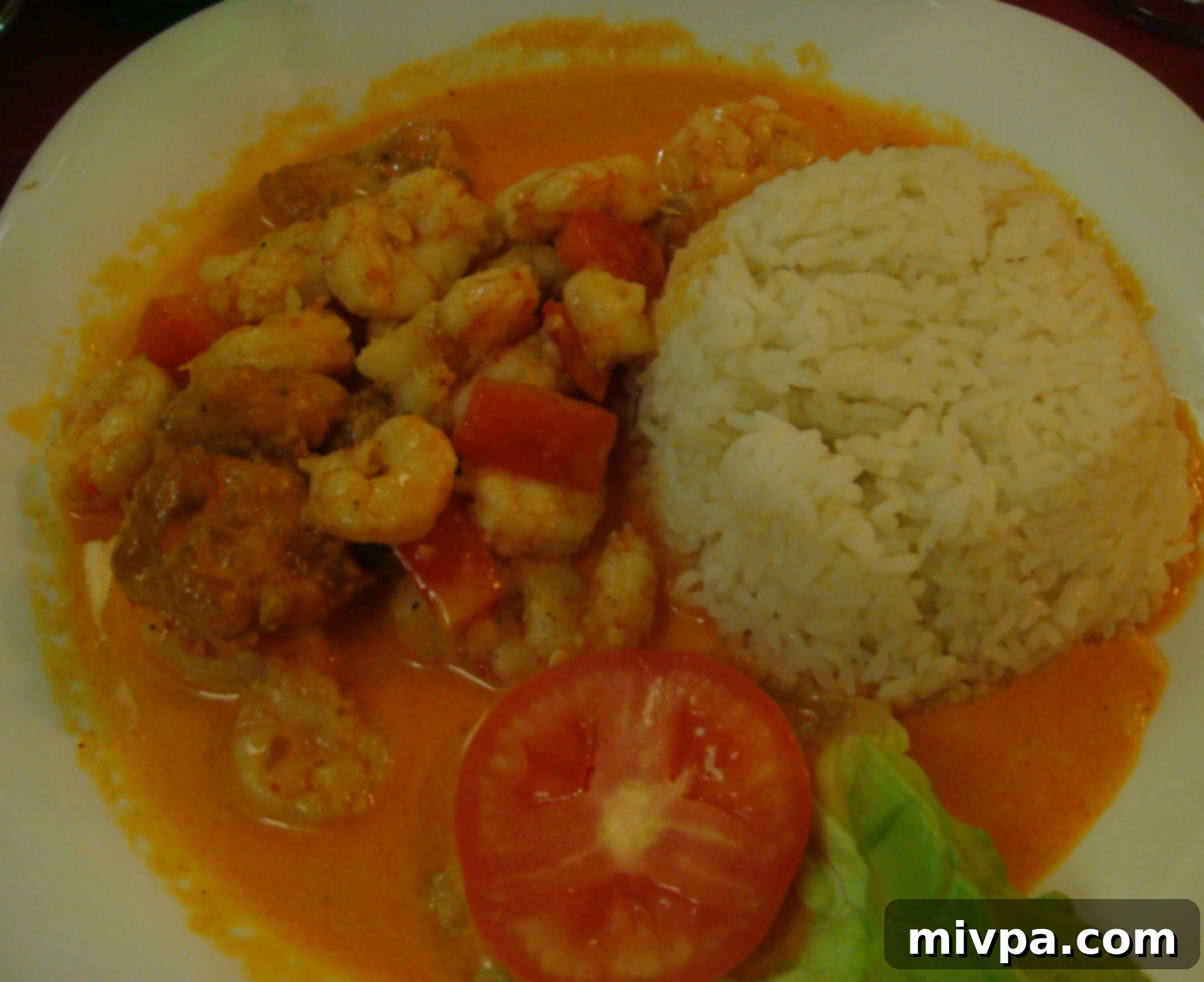A Taste of Peru in Buenos Aires: Reviewing Primavera Trujillana
There’s a special charm in choosing a restaurant whose name resonates with the season, especially when you’re celebrating a spring date night. Such was the case for Juan and me when we found ourselves at a restaurant aptly named “Primavera Trujillana,” which translates to “the Trujillo Spring.” Although our culinary journey didn’t take us all the way to the historic city of Trujillo in Peru, we were perfectly content within the vibrant confines of Buenos Aires, Argentina, ready for a delightful diversion in our dining habits.
The beauty of food lies in its ability to transport you, to tell a story, and to introduce you to new cultures. My esteemed cooking professor, Pelusa Molina, often shared a profound truth: “Decime que comes, y te digo quien sos” – “Tell me what you eat, and I will tell you who you are.” This adage rings profoundly true. Immersing oneself in the eating habits of another culture, whether through observation or active participation, offers an unparalleled window into its heart and soul. Cuisine is often a defining pillar of a cultural identity, so much so that truly understanding a group can be challenging without having shared a meal at their table. For those eager to connect with a new culture or ethnic group, the best advice is simple: be open. Try their popular and common dishes before making any judgments based on appearance or unfamiliar names. Every dish carries history, tradition, and a community’s essence.
For me, the act of eating, writing about, and discovering diverse cuisines from around the globe has always been an enthralling pursuit. In recent years, my fascination has grown beyond mere consumption. I now delve deeper, researching the origins, ingredients, and cultural significance of the food I enjoy. This conscious effort has become a powerful tool for expanding my knowledge of different cultures and their people, fueled simply by a curious appetite. As the saying goes, “When in Rome, do as the Romans do.” Or, in my particular case, when in a Peruvian restaurant, I strive to eat as the Peruvians do.
Primavera Trujillana: A Peruvian Gem in Belgrano
Nestled at Franklin D. Roosevelt 1627 in the lively Belgrano neighborhood of Buenos Aires, just a few streets from the bustling Barrio Chino (Chinatown), Primavera Trujillana stands out not only for its authentic flavors but also for its remarkably reasonable prices. In a city where restaurant costs can quickly add up, finding main dishes between 50-70 pesos and a full dinner experience for 80-100 pesos per person is a welcome surprise. While not directly beside a subway station, the restaurant is easily accessible via the extensive public bus system or by car, making it a convenient destination for those seeking genuine Peruvian cuisine.
The name itself – “Trujillo Spring” – is a nod to Trujillo, a significant city in northwestern Peru. As the capital of the La Libertad Region, Trujillo is majestically situated on the banks of the Moche River, close to its mouth at the Pacific Ocean. This valley holds immense cultural importance, having been a stronghold for ancient Moche and Chimú civilizations. Today, it forms the core of Peru’s second most populous metropolitan area. Therefore, it’s clear that Primavera Trujillana aims to transport its diners to this rich, cultural heartland of Peru, offering a true taste of Trujillo’s distinctive culinary heritage.
A Glimpse of the Ambiance:
Primavera Trujillana’s Upper Terrace:

And its impressive wine collection:

The Culinary Journey Begins: Appetizers and Cocktails
Our gastronomic adventure at this small yet charming establishment began with a complimentary appetizer that immediately captured our attention: Cancha, toasted Peruvian corn. While the Spanish word “cancha” typically refers to a sports court, this particular corn snack is anything but ordinary. Each kernel was crunchy on the outside, surprisingly airy in the middle, and perfectly seasoned with a subtle saltiness. It was, to put it mildly, dangerously addictive. We found ourselves constantly reaching for more, almost filling up on this delightful starter even before ordering our main dishes.

Cancha is more than just a snack; it’s a cultural staple in the Andean countries, frequently accompanying dishes like ceviche, which we will delve into later. As About.com’s South American Food section notes, it’s made from a unique variety of corn called maiz chulpe. Unlike popcorn, this corn doesn’t explode; instead, it swells and becomes a delicious, homemade corn nut. Cancha is a fantastic crowd-pleaser for any gathering, loved for its simple preparation and its perfect pairing with classic Peruvian cocktails like the Pisco Sour. Its versatility and satisfying crunch make it an essential part of Peruvian hospitality.
Given Cancha’s reputation as an ideal companion to Pisco Sours, trying this traditional Peruvian cocktail was an absolute must. For those unfamiliar, the Pisco Sour holds a significant place in South American culture, so much so that both Peru and its neighbor, Chile, claim it as their national drink – a friendly, yet passionate, debate that seems destined to continue indefinitely.
Passion Fruit-Flavored Pisco Sour: A Refreshing Twist

According to Wikipedia, the Pisco Sour is a quintessential cocktail of Western South American cuisine. Its intriguing name combines “Pisco,” a Quechua word for “bird” (referring to the port city where the spirit originated), and “sour,” indicating its family of mixed drinks. The authentic Peruvian Pisco Sour traditionally features Peruvian Pisco as its base liquor, expertly blended with freshly squeezed lime (or lemon) juice, simple syrup, ice, egg white for that signature frothy top, and a few dashes of Angostura bitters. While the classic version is beloved, creative variations abound, often incorporating tropical fruits like pineapple or even unique ingredients such as coca leaves.
My previous encounter with a classic Pisco Sour had left me with a rather unenthusiastic impression. However, this time, seeking a more adventurous experience, we opted for a vibrant passion fruit variant. This proved to be a brilliant decision. The cocktail was a perfect balance of sweet and refreshing, a true taste of summer. The small, dark passion fruit seeds not only added a delightful grainy texture but also created a charming polka-dot effect against the bright yellow liquid, making each sip a delightful sensory experience.
Main Course Delights: Camarones Ajillo
With our appetites whetted by the addictive Cancha and the invigorating Pisco Sour, it was time to move on to our main course. Our eyes were drawn to one of the restaurant’s specialties: Camarones Ajillo, or Garlic Shrimp.

This dish presented a generous serving of plump shrimp, glistening under a luscious, light-orange garlic sauce. To my palate, the sauce seemed to be a harmonious blend of garlic, tomatoes, and onions, creating a rich and savory base. Complementing the shrimp were small, perfectly fried pieces of fish fillet, adding another layer of texture and flavor. A side of fluffy white rice was the ideal accompaniment, perfect for soaking up every last drop of the tantalizing sauce. The sauce itself had a subtle spiciness that added an exciting kick without being overpowering, faintly reminiscent of a mild orange curry enriched with coconut milk, though no such ingredients were actually present. I would confidently rate this dish an 8/10. It was incredibly palatable and satisfying, leaving a lasting impression, albeit a slight thirst afterward, a small price to pay for such robust flavors.
Exploring Ceviche: A Peruvian Icon
Although we didn’t order Ceviche during this particular visit, it would be remiss not to introduce this iconic dish, given its profound association with Peruvian cuisine, and particularly its fascinating fusion with Japanese culinary traditions.
Ceviche: A Symphony of Freshness
Ceviche, also commonly spelled cebiche or seviche, is a celebrated seafood dish prevalent across the coastal regions of the Americas, most notably in Central and South America. At its heart, the dish consists of impeccably fresh raw fish, meticulously marinated in vibrant citrus juices – typically lemon or lime. This acidic marinade “cooks” the fish without heat, transforming its texture and flavor. The dish is traditionally spiced with ají or chili peppers, adding a characteristic heat. Further enhancements include finely chopped red onions, a touch of salt, and fresh coriander, all contributing to its complex flavor profile. Ceviche is rarely served alone; it is usually accompanied by carefully chosen side dishes that beautifully complement its zesty flavors, such as sweet potato, crisp lettuce, large kernel corn (like the one used for Cancha), or creamy avocado. Given that ceviche is not cooked with heat, utmost importance is placed on its freshness to mitigate any risk of food poisoning. Many chefs and health guidelines suggest preparing it with frozen or blast-frozen fish, which helps in eliminating potential parasites like Anisakis, ensuring both safety and exquisite taste.
A Sweet Ending: Suspiro a la Limeña
After savoring every single grain of rice on my plate – a personal quirk of mine, rooted in the habit of always finishing all my food, no matter the portion size – we were finally ready for dessert. Juan was particularly keen on trying a dessert highly recommended by his colleague, one with a rather poetic and intriguing name: Suspiro a la Limeña. Translated literally, it means “the sigh of a woman from Lima.”

Suspiro a la Limeña is a quintessential criollo dessert, profoundly influenced by Spanish culinary traditions, particularly the Blancmange. Its delightful structure consists of two distinct layers. The rich, creamy bottom layer is crafted from Dulce de leche, a sweet condensed milk caramel, generously enriched with egg yolks to give it an irresistible velvety texture. Crowned atop this luscious base is a light and airy meringue, distinctively flavored with port wine. The romantic origin of its name is attributed to the famous Peruvian poet and author José Gálvez. His wife, Doña Amparo Ayarez, was renowned for her exceptional culinary skills. When asked about the inspiration behind the dessert’s evocative name, Gálvez reportedly replied, “Because it is soft and sweet, like the sigh of a woman.” In this specific context, referring to a woman from Lima, hence a “Limeña.”
To be entirely candid, this dessert was my least favorite of the evening. While the port wine-infused meringue topping was delightfully delicate and flavorful, the bottom layer of dulce de leche was, for my palate, excessively thick and intensely sweet. Despite having lived in Argentina for nearly three years, my taste buds still haven’t fully acclimated to the country’s penchant for overly sweet desserts, even when they are hailed as house specialties. It was a beautiful presentation and a significant cultural experience, but personally, I prefer a more balanced sweetness.
Final Verdict: A Worthwhile Peruvian Experience
Overall, despite a few minor quirks, I genuinely enjoyed our dinner at this small, slightly cozy restaurant. The yellow lighting, while atmospheric, made for a less-than-ideal setting for intimate conversations, and yes, the occasional cockroach made an appearance (though, coming from Asia where I’ve learned not to scrutinize kitchen or restaurant floors too closely, this didn’t perturb me much). These small details, however, fade when weighed against the overall experience.
For its remarkably affordable pricing, the generally excellent quality of food, and the authentic new culinary experience it offered, I would confidently give Primavera Trujillana a solid 7/10. It’s a place where you can truly immerse yourself in the rich flavors of Peru without breaking the bank, right in the heart of Buenos Aires. For anyone seeking to explore the vibrant and diverse world of Peruvian cuisine, Primavera Trujillana offers a compelling and delicious journey that is well worth taking.
